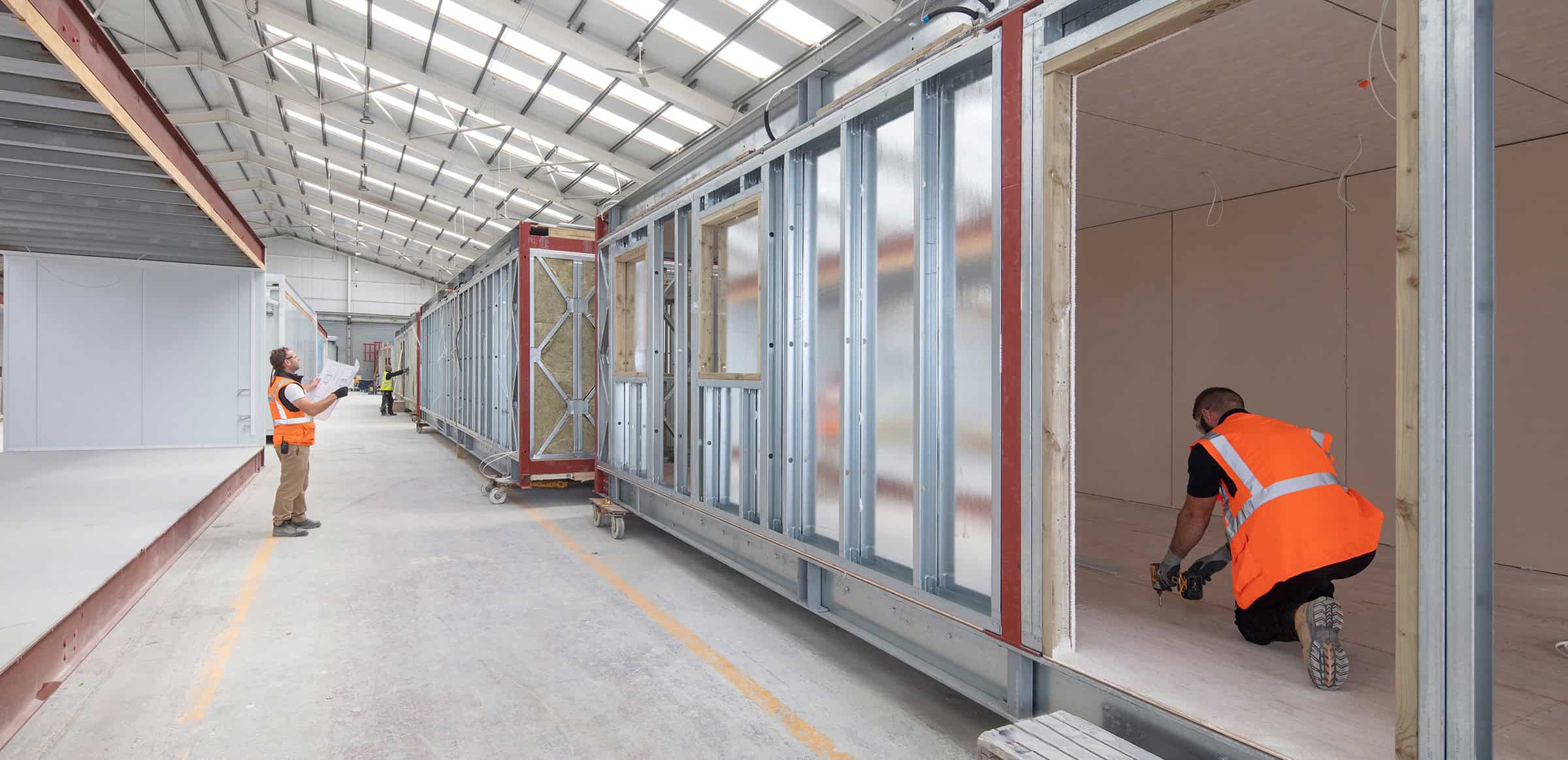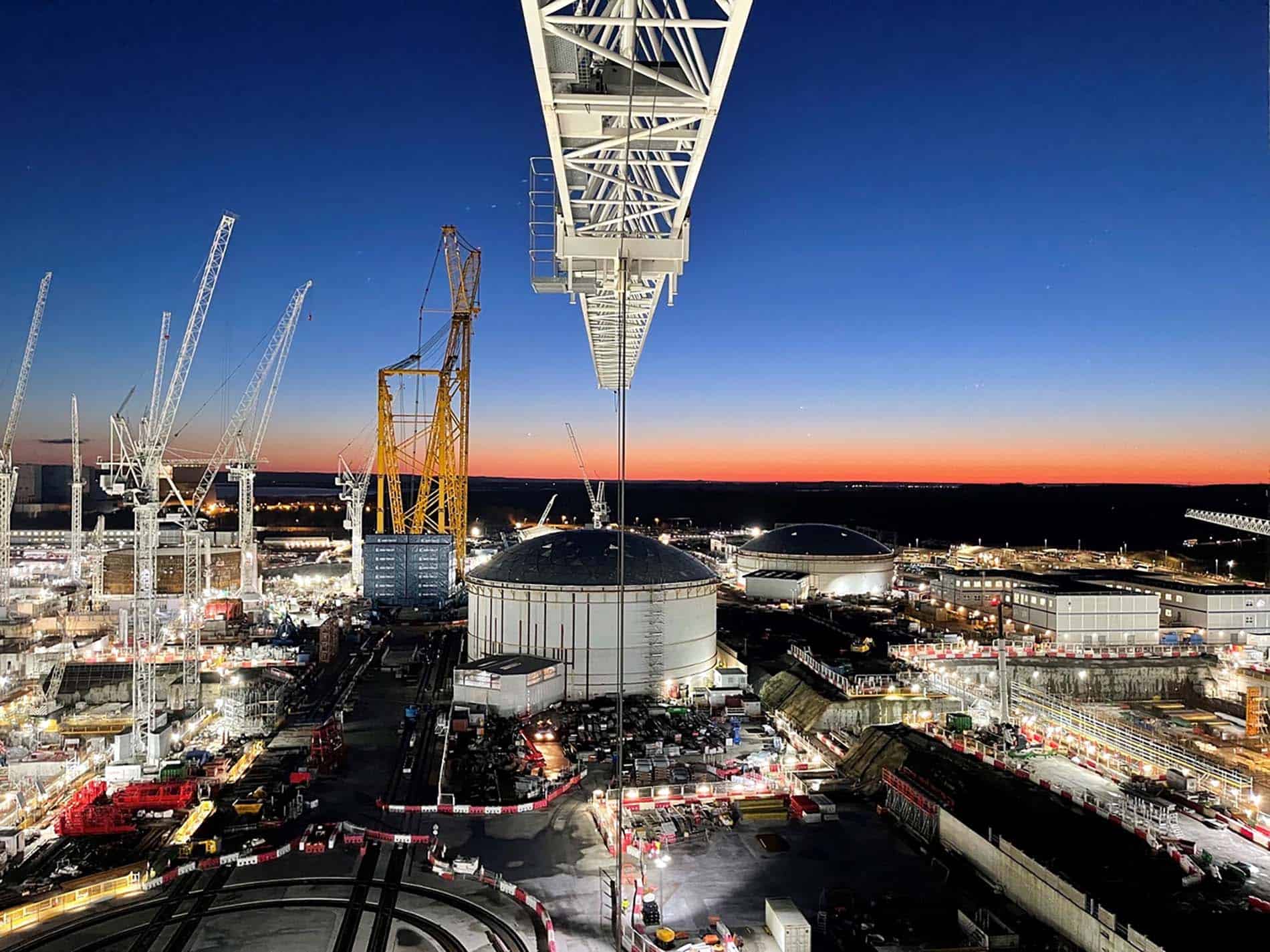With the push for clean nuclear energy gaining momentum in the UK, housing the people who work on these remote sites is vital. Temporary modular buildings will play a key role in delivering the government’s nuclear roadmap.
Hinkley Point C, the UK’s first new nuclear power station to be built since 1995, is predicted to be operational before 2030, and with plans for Sizewell C to follow shortly after, high quality construction accommodation is needed quickly.
Creating communities from scratch

Nuclear power stations require thousands of workers for construction, often in remote, coastal locations that provide the water required for cooling systems. Hinkley Point C and Sizewell C are located in West Somerset and Suffolk, with other unfrequented areas across Cumbria, Teesside, Gloucestershire and Wales pinned as future locations for small modular reactor based (SMR) power stations.
With scarce housing and little infrastructure in these remote areas, temporary pop-up towns could provide a solution that reduces the need for workers to commute to site – lowering emissions and protecting local villages from strain.
The existing town at Hinkley Point C, featuring temporary modular buildings, includes a range of amenities such as hotels, pubs, football pitches, fitness rooms, religious areas, conference rooms, and office space. These modular pop-up towns are essential for workers to maintain a healthy work/life balance and are crucial in attracting the necessary skills for large-scale projects. With the need for speed and flexibility in construction, it’s questionable whether traditional methods can keep up with these innovative, temporary modular solutions.
Temporary modular towns

One of the most important factors for these temporary towns is the requirement to be scalable in line with project phases. Temporary modular buildings are flexible, sustainable and able to scale up and down with project requirements at pace, as numbers of workers increase and decrease over time.
Once a building is no longer needed, temporary modular buildings offer further benefits. Easier to dismantle than traditionally constructed buildings, temporary modular units can either be reused on a different part of the site or removed and recycled – lowering the site’s overall embodied carbon.
Volumetric and panelised building solutions have been successfully used at the Hinkley Point C site, from office accommodation to catering facilities. These modern solutions are adaptable: able to expand or decrease capacity by adding new floors or walls when required. Additionally, with long rental periods in place, temporary modular buildings provide cost certainty, mitigating the risk of surprises down the line.
To date, Premier Modular has provided more than 41,500 sq. ft. of temporary accommodation for nuclear sites, showcasing the flexibility and speed of installation.
Temporary solutions for a greener future

Net Zero principles should be reflected in the building process for sites such as Hinkley Point C or Sizewell C. Temporary modular buildings offer a range of sustainable benefits, including offsite construction with zero waste to landfill. Improving circularity within sites as modular buildings are recycled or repurposed to scale up and down in line with worker needs, with delivery times set so that the buildings arrive right at the point of need.
As units are rented for long periods or reused, the carbon within them does not get released, in contrast to a traditionally constructed building that would have to be knocked down after use. This means that temporary modular buildings will not contribute further to the power station’s carbon-intensive building process, accelerating the way to Net Zero and a greener future. Want to know how temporary modular buildings could benefit your next project? Talk to one of our experts today.











